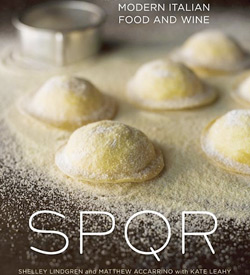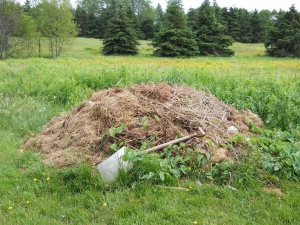The Chefs’ Bookshelf- Part 3

This edition of The Chefs’ Bookshelf could be alternatively titled “Chefs Who Own Many Books.” And I thought my own cookbook selection of 10 cookbooks (and Martha Stewart Living back issues) was a lot! The recommendations from our chefs today span a large time period and cover different cooking styles– from a French fine dining cookbook published in the 1960s to an utterly modern restaurant cookbook published a year ago, to a book of vegetarian recipes. I hope you enjoy the recommendations from our favorite chefs below.

Christopher Kearse
Chef and Owner, Will BYOB, Philadelphia
Recommended cookbook: Ma Gastronomie by Fernand Point 
Chef Chris, aruguably one of the top chefs in Philadelphia right now, notes Ma Gastronomie by noted French chef Fernand Point as his favorite cookbook. Favorite cookbook out of about 500 on his bookshelves, as he gets a new book every two weeks. (That means this one is really really good.) Chef Chris has a rare first edition of this 1969 publication. Ma Gastronomie “is more than just recipes; it’s a lot of Point’s views on food, restaurants, and cuisine.” Fernand Point revolutionized French cuisine, creating his own versions of classic dishes. Ma Gastronomie shares Point’s provocative takes on food and over 200 of his recipes.
 Ben Nerenhausen
Ben Nerenhausen
Chef, Mistral, Princeton
Recommended Cookbook: SPQR by Matthew Accarrino 
Ben, chef at Scott Anderson’s recently-opened Mistral, recommends (when forced to choose) SPQR by Matthew Accarrino. SPQR is a cookbook and wine guide celebrating innovations of modern Italian cooking, as practiced by Accarrino’s eponymous San Francisco restaurant. Ben appreciates that “not only is [author] Accarrino a great guy, but his food is tasty.” SPQR is “classic in approach but modern in delivery; and the recipes in the book are great for at home as well.”

Theo Petron
Chef, A la Maison Personal Chef Service, Bucks County
Recommended cookbooks: Vegetarian Cooking for Everyone by Deborah Madison, The Way to Cook and Mastering the Art of French Cooking by Julia Child 
Theo is another chef with way too many cookbooks—he sent me picture of his overflowing bookshelves as proof! Theo generally refers to cookbooks for inspiration, not so to actually follow a recipe. He recommends several cookbooks and cookbook authors. Deborah Madison’s Vegetarian Cooking for Everyone is a classic (Theo just adds meat), showing basic vegetarian cooking techniques- cooking techniques, combining ingredients, and presenting with style. It’s the definitive guide on vegetarian cooking. Theo’s also a big fan of Julia Child. He likes The Way to Cook the best, and Mastering the Art of French Cooking is “always a fun read.” Theo says “I tend to collect books from restaurants that I’ve enjoyed, however I think that certain key ingredients are always left out of restaurant recipe books. Afterglow, you’ve got to keep people coming back!”











